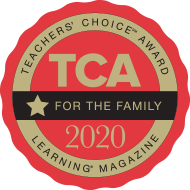Materials
- camera
- magnifying glasses
- string
- Plant Journals
Key Science Concepts
- There are many different types of plants and seeds.
- Plants have different parts: roots, stems, leaves, and fruit.
- A tree is a very large plant. There are many different types of trees.
Vocabulary
Encourage children to use vocabulary related to plants, such as trees, leaves, stems, twigs, roots, bark, flowers, grass, and seeds, and science process words such as observe, describe, compare, and predict.
Directions
Tell children they are going to go outside together to look at trees. Together, choose several trees to explore and compare.
- Use string to measure tree trunks. Ask children, Which one is the biggest? How many children does it take to wrap around the trunk?
- Examine the bark with your eyes, fingers, and magnifying glass. Bring up children’s experience earlier in the day with bark rubbing.
- Look at the branches and leaves or needles. How are they similar or different? Ask children, What do you notice about this tree?
- If there are any seeds from the trees, collect them to add to the Seed Museum.
- Have children collect leaves from the ground; these can be added to the Leaf and Bark Rubbings center.
- Have children draw a picture of the tree in their Plant Journals.
Reflect and Share
Remind children that trees are very big plants. Ask:
- How is this tree like our little plants inside?
- Where are its roots?
- How are the tree roots like the roots of our plants inside?
- How do you think the tree roots help the tree?
- Do you think our plants inside will ever grow as tall as this tree?
If the trees go through any changes in the coming weeks, like new flowers, buds, or the leaves change color, have children observe the changes and take photos to record them.

 Español
Español








